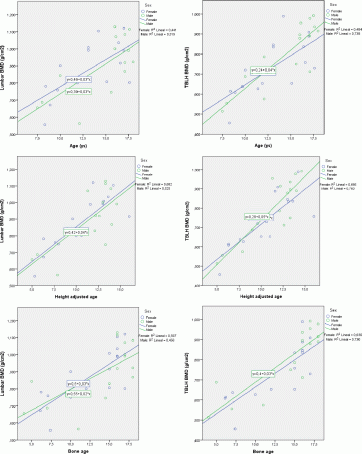ICCBH2017 Poster Presentations (1) (209 abstracts)
Chronological age, height adjusted age and bone age: Which of them correlates better to bone mineral density in kidney-transplant recipient children?
Regina Ambrosi 1 , Miguel Angel Guagnelli 1 , Alma Almiray 1 , Ana Hernandez 2 , Mara Medeiros 2 & Patricia Clark 1
1Clinical Epidemiology Unit, Hospital Infantil de Mexico Federico Gomez, Mexico City, Mexico; 2Nephrology Research Laboratory, Hospital Infantil de Mexico Federico Gomez, Mexico City, Mexico.
Chronic kidney disease in children causes multiple bone alterations, particularly renal osteodystrophy, which affects both bone quality and size, in turn causing short stature, bone deformities and brittleness. Once they get a transplant, this process starts to revert, and although mineral alterations improve, short stature often requires growth hormone supplementation but bone fragility requires evaluations in order to revert the disease’s effects. DXA is a valuable tool for its measurement in children affected with chronic diseases but it requires adjustment for their proper evaluation.
Objective: To evaluate height adjusted age (according to 50th percentile in CDC growth charts) and bone age (according to Greulich and Pyle charts) correlation to bone mineral density in kidney transplant recipient children.
Methods: DXA measurements were made for 31 (16 girls) pediatric kidney transplant recipients. Lumbar and total body less head (TBLH) bone mineral density (BMD) were obtained. Within the same measurement, non-dominant hand image was obtained to evaluate bone age. BMD for chronological age was obtained directly, height adjusted age and bone age were calculated and the results graphed into a scatterplot, R2 values were obtained.

Results: R2 correlation of lumbar and TBLH were higher in both bone age and height adjusted age than in chronological age. Height adjusted age shows the best correlation in both boys and girls with values up to 0.76 in girls for TBLH and 0.68 for girls in lumbar region.
Conclusion: Height adjusted age seems to show a better correlation with BMD in children recipient of kidney transplant. Follow up of these patients is in progress to evaluate long term evolution of bone mineral density, response to transplant and long term fracture risk.
Disclosure: The authors declared no competing interests.




